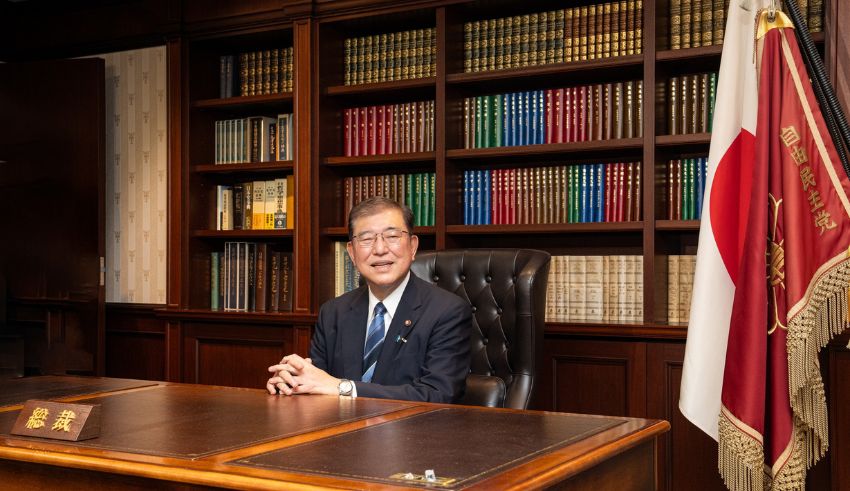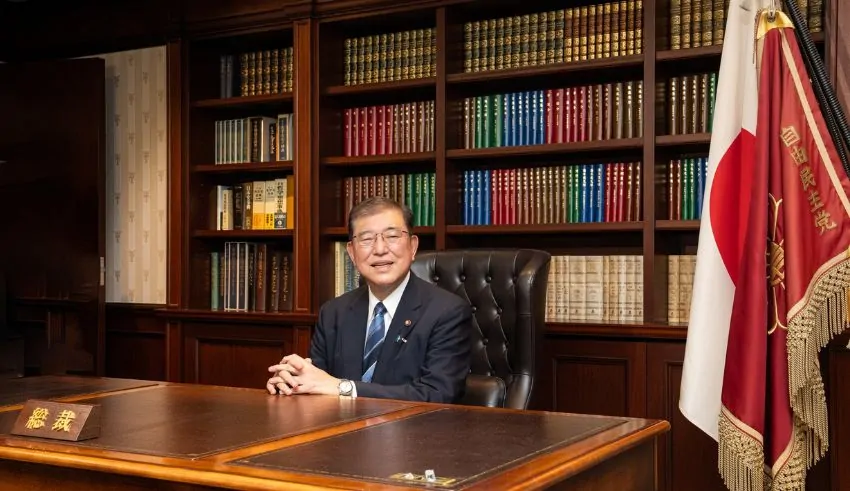

(C) Shigeru Ishiba/FB
On Friday, the Liberal Democratic Party (LDP) of Japan selected Shigeru Ishiba as their new president; this will see him named as the prime minister of the country at a legislative session set for tomorrow. This transition in power happens as retiring Prime Minister Fumio Kishida leaves amid rising corruption claims hurting the LDP. Ishigo’s election marks a significant rightward move in Japanese politics as experts expect Ishigo’s cabinet would focus on hastening the remilitarization of the country and gearing ready for probable conflict with China.
Shigeru Ishiba’s ascent to top was not without criticism. Ranked second among close friends of former Prime Minister Shinzo Abe, fellow anti-China activist Sanae Takaichi, in the first round of voting. Representing Abe’s ultra-nationalist LDP group, Takaichi hardly missed a majority and demanded a run-off vote. With 215 votes in the second round, exceeding Takaichi’s 194, Ishiba triumphed in what has been considered as a somewhat undemocratic process. Given each of their full votes, the voting strongly benefited LDP members from both houses of Japan’s National Diet. The party’s more than 1.1 million members felt their ballots were diluted, earning just a fraction of a vote each. The final run-off was only open to Diet members and delegates from Japan’s 47 prefectures, therefore stressing the elite-driven nature of the election.
Shigeru Ishiba’s political odyssey is firmly entrenched in the military and the ruling class. Though he often depicts himself as an “outsider” inside the LDP, his political background is nothing exceptional. From a well-known political family, Jiro Ishiba, a high-ranking bureaucrat Governor of Tottori Prefecture before early 1980s cabinet minister tenure, is father of Ishiba. Following the death of his father, the LDP recruited the younger Ishiba to run for a Diet seat in 1986, therefore launching a political career marked by great support of Japan’s remilitarization.
Ishiba is long associated with the Japanese defense system. From 2002 until 2004, he managed the Defense Agency, which thereafter renamed itself the Defense Ministry. He returned to be defense minister from 2007 to 2008; along the years, he has held several government positions. From 2012 to 2014, Ishiba was notably the secretary-general of the LDP; he gained a reputation for being austere on national security. Having run multiple times for the LDP presidency, he tried in 2008, 2012, 2018, 2020, and 2024 till at last he landed the role. His political thought is in line with the ultra-nationalist Nippon Kaigi group, which advocates post-war democratic liberties’ reduction and Japan’s rearmament.
Ishiba sees the remilitarization schedules differently even though he shares many ideas with other hawkish LDP members, notably former Prime Minister Abe. Long pushing for a faster, more aggressive rise in Japan’s military might, is Ishiba. Abe has blasted the efforts of the Abe government as inadequate, even though he pushed through constitutional “reinterpretations” allowing Japan to join in military actions with its allies, therefore overcoming post-World War II legal restrictions. Under Abe’s supervision, the LDP also approved divisive laws authorizing Japan’s Self-Defense Forces to operate overseas, thus challenging the pacifist attitude embedded in Japan’s postwar constitution.
Ishiba has pushed for an even more extreme military build-up, advocating an increase in defense spending above the present objective to double the military budget to 2 percent of Japan’s gross domestic income by 2027. His military aspirations for Japan go well beyond simple defense. He said Japan has to prove itself as a top military force capable of affecting the Indo-Pacific region all around. Ishiba’s dreams for Japan’s military are connected to a broader general counter-perceived threat from China, Russia, and North Korea policy.
Ishiba’s political agenda primarily reflects his long-standing advocacy of constitutional revision. Especially Article 9 of the Japan constitution formally prevents the country from maintaining a military or engaging in acts of war. This article has been a mirror of Japan’s post-war pacifism for decades. Ishiba and other LDP nationalists have argued that it hinders Japan’s potential to defend itself and its allies, so they have pushed to alter or maybe remove this clause.
Shortly after his election as LDP president, Ishiba reiterated in an article for the Hudson Institute his commitment to constitutional reform. Though he did not directly ask that Article 9 be removed from this effort, he has past comments favoring the complete abolition of the fundamental section. His stance goes beyond the already polarizing suggestion made by the Abe group—that of recognizing the existence of Japan’s Self-Defense Forces. Ishiba wants Japan to be a completely developed military force free from the limitations of its pacifist constitution.
Complementing his idea of Japan rising as a military commander in the Indo-Pacific, Ishiba has proposed the creation of a “Asian NATO”. From China, Russia, and North Korea, in his view this alliance would be able to neutralize problems. Together against Beijing’s growing might, he sees a collective security framework including not only Japan but also other “democratic” nations in the area.
Beyond regional defense, Ishiba’s ambitions for Japan’s military posture span His demand for a revision of the post-World War II US-Japan security treaty now requiring the US to defend Japan in exchange for Japan providing military bases for American forces. Ishiba has challenged this agreement as out-of-date and unfair, implying that Japan should be entitled to post its soldiers at US bases in areas like Guam. Unlike the pacifist beliefs driving Japan since 1945, his vision is one of Japanese imperial power projection throughout the Pacific.
Most controversially, Ishiba has said that Japan should look at the possibility of either developing its own nuclear arsenal or maybe sharing nuclear weapons with the US. Examining US nuclear weapon deployment into the region, he argued in his Hudson Institute article in favor of a “Asian NATO”. Ishiba has always been in favor of Japan being able to construct such weapons, even though he did not really advocate Japan building its own nuclear weapons in this article. This viewpoint is expected to cause significant opposition both locally and internationally given memories of the atomic bombings of Hiroshima and Nagasaki still firmly ingrained in the Japanese public awareness.
Ishiba’s recent actions amply demonstrate his strong China orientation. Leading a legislative trip to Taiwan in August, he paid a visit to Taiwanese President Lai Ching-te. During the tour, Ishiba emphasized that Japan should be “shoulder to shoulder” against Beijing in line with other democratic countries in the vicinity. His visit to Taiwan is part of a bigger Japanese and ally strategy aimed to exert further pressure on China over Taiwan’s status. Japan has supported the One China policy for decades, which views Taiwan as part of China, just as the United States has done. But recent actions by Japan and its allies have challenged the status quo, further increasing Beijing’s fears.
Shigeru Ishiba’s election as LDP president and his expected prime minister nomination signal a major shift in the Japanese political environment. His commitment to speedy remilitarization, constitutional amendment, and the expansion of a more muscular military presence in the Indo-Pacific breaks Japan’s post-war pacifistic position. As Japan’s new leader, Ishiba would most likely support more autonomy from the US even as he builds military ties with Washington. His concept of an “Asian NATO” and a more robust defensive posture against alleged threats from China, Russia, and North Korea represents a sharp increase in regional tensions.
The world will be closely watching as Ishiba takes office; many worry that his strong military strategies may aggravate greater turmoil in the Indo-Pacific. One thing is certain: Japan is entering a new era under his leadership, most most likely marked by militarism and enhanced geopolitical competitiveness. Whether Ishiba’s government can combine its nationalist ambitions with the imperative for regional peace remains to be seen.
BLACKPINK is planning their fourth concert tour across the globe and their brand-new album for release in 2025. Member Lisa…
The 2024-2025 BOC Life Hong Kong Premier League is a different league which is structured with triple-round robin competition every…
On May 5th the 2025 Met Gala will glitter the world through its return to The Metropolitan Museum of Art…
‘Children’s Day’ is celebrated annually on 5 May in South Korea, on this day across the nation many campaigns, creative…
May is one of the crucial financial months in a year, if you have any important transactions or any official…
If you happen to breathe K-drama, then your 'May 2025' will most likely be well-rendered into a month! Romantic sagas,…
This website uses cookies.
Read More